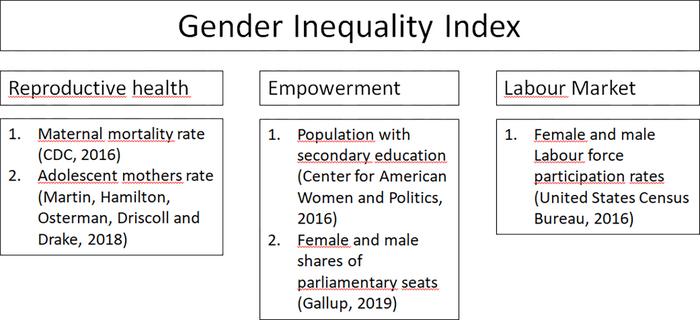A new tool for measuring gender inequality at the state level reveals significant disparities across the United States, with implications for women’s wellbeing and social activism. The research, published in PLOS ONE, adapts the United Nations’ Gender Inequality Index to provide a more granular view of gender disparities within countries.
Mapping Gender Inequality Across America
The study, led by Bruno Gabriel Salvador Casara of New York University Abu Dhabi, found that US states were “substantially gender-unequal overall.” The researchers’ state-level Gender Inequality Index incorporates measures of women’s reproductive health, social and political empowerment, and participation in the labor market.
Arkansas, Louisiana, and Oklahoma emerged as the states with the highest gender inequality, while Massachusetts, California, and Maine scored the lowest. This variability highlights the importance of examining gender disparities at a more local level, as national averages can mask significant regional differences.
The findings provide a nuanced picture of gender inequality across the country. For instance, states with higher inequality scores tended to have lower measures of women’s wellness, including life satisfaction, financial wellbeing, and feelings of safety. Interestingly, men in these states also experienced somewhat lower financial wellbeing, supporting previous research that links gender inequality to overall poorer economic growth.
Gender Inequality and Social Movements
The researchers also explored the relationship between gender inequality and social activism, specifically focusing on the #MeToo movement. By analyzing Twitter data, they found that states with higher inequality scores generated fewer tweets with the #MeToo hashtag. This suggests that greater gender inequality may dampen awareness and activism around issues of sexual abuse and violence against women.
Salvador Casara and colleagues note: “States with higher inequality scores tended to generate fewer tweets with the #MeToo hashtag, suggesting that greater gender inequality may diminish awareness and activism around #MeToo issues.”
The study also revealed a correlation between political leanings and gender inequality, with more conservative states tending to have higher gender inequality scores. This finding adds another layer to the complex relationship between politics, social norms, and gender equality.
Why it matters: Understanding gender inequality at a state level is crucial for policymakers, advocates, and researchers. It allows for more targeted interventions and provides a clearer picture of the challenges faced by women in different regions. The link between gender inequality and reduced participation in social movements like #MeToo highlights how disparities can perpetuate themselves by limiting awareness and activism.
The new state-level Gender Inequality Index offers several advantages over country-level measures. It can reveal disparities that might be obscured in national data, allow for comparisons between states, and potentially track changes over time more accurately. This granularity can help in designing more effective policies and interventions tailored to specific regional contexts.
However, the study also raises questions that warrant further investigation. For example, what factors contribute to the differences in gender inequality between states? How do historical, cultural, and economic factors interact to create these disparities? And how can this information be used to promote greater equality?
Looking ahead, this research opens up new avenues for studying and addressing gender inequality. The state-level Gender Inequality Index could be applied to other countries, allowing for more detailed international comparisons. It could also be used to track the impact of policies and social changes over time, providing valuable data for assessing the effectiveness of various interventions aimed at promoting gender equality.
As societies continue to grapple with issues of gender inequality, tools like this state-level index will be crucial in understanding the problem and measuring progress. By providing a more detailed picture of gender disparities, this research contributes to the ongoing effort to create more equitable societies for all.
If our reporting has informed or inspired you, please consider making a donation. Every contribution, no matter the size, empowers us to continue delivering accurate, engaging, and trustworthy science and medical news. Independent journalism requires time, effort, and resources—your support ensures we can keep uncovering the stories that matter most to you.
Join us in making knowledge accessible and impactful. Thank you for standing with us!

